
Бесплатный фрагмент - Unbelievable Adventures of Krasnoyarsk mountain climbers
2021
MY ANGEL
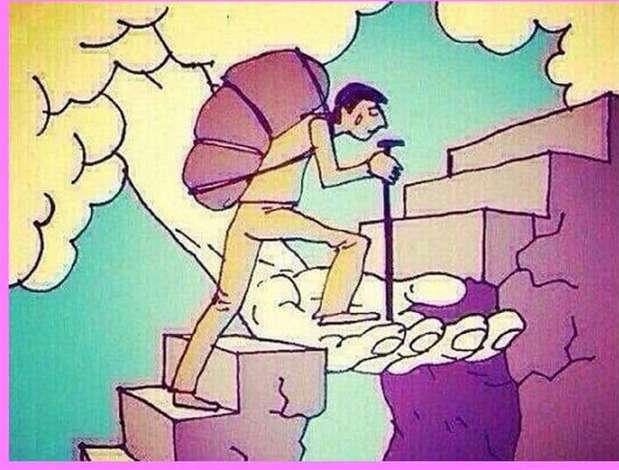
The angel spoke to the man:
— Do you want me to show you your life?
— I do,» answered the man.
The angel lifted him above the ground, and the man saw his whole life and two pairs of footprints walking beside him.
— Who is that beside me?
— I am the one who accompanies you all your life.
— Why is it that sometimes you can only see one pair of footprints?
— These are the hardest times in your life,» says the angel.
— And what, did you leave me in the most difficult moments?
— No, I carried you in my arms… — answered the angel quietly.
May your angel always be there for you.
Preface Or KRASNOYARSK PEOPLE ARE LIKE THAT
How do we imagine a Siberian: he is a man who drinks a bucket of vodka, then bathes in an ice-hole and after all that fights a bear.
And how do we imagine a Siberian woman: she is a woman who stops a bear on the run, enters the taiga burning, and then receives a prize in a beauty contest (as, however, women all over Russia).
Krasnoyarsk man in particular stand out. Siberian character, and nature has given them an amazing phenomenon — Krasnoyarsk Pillars — the rocks near the city. This combination of rocks and the Siberian character was the foundation of Krasnoyarsk school of climbers and mountaineers, one of the strongest in the world.
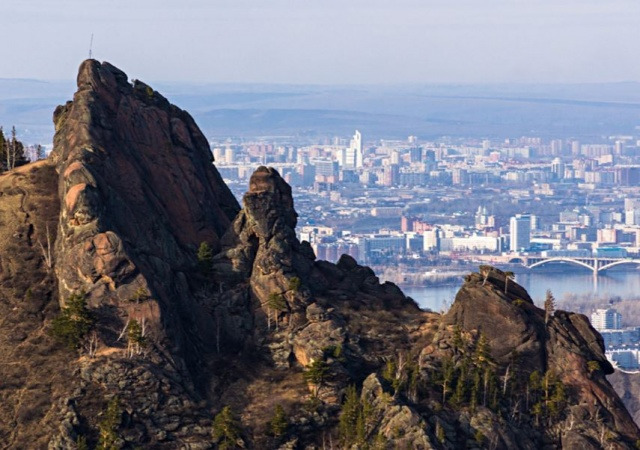

.Pillars — the result of supervolcanic eruptions in Eastern Siberia, which occurred about 450 million years ago.
Krasnoyarsk is the only major city on the outskirts of which there are magnificent rocks. Therefore, the people of Krasnoyarsk could not help but take up rock climbing.
.
.
.
The Legend of the Black Mountaineer
Once when I was in the badge group at Elbrus alp, we sang a «scary» song around the campfire, and there were these words:
«You come out of your tent at night,
A shadow flits by the side,
And your soul goes in your heels
At the damned altitude.»
The old and experienced instructor remarked that there was no need to joke, and told us the legend of the Black Mountaineer.
This legend has long been circulating in the Caucasus. So, a long time ago two friends went to the mountain routes. They had done many routes together, and they did not go to the mountains with others. And one day they went to a difficult and high mountain. The route was difficult, the weather did not please them. So, when they were not far from the summit, one of them felt unwell and asked his friend to let him down.
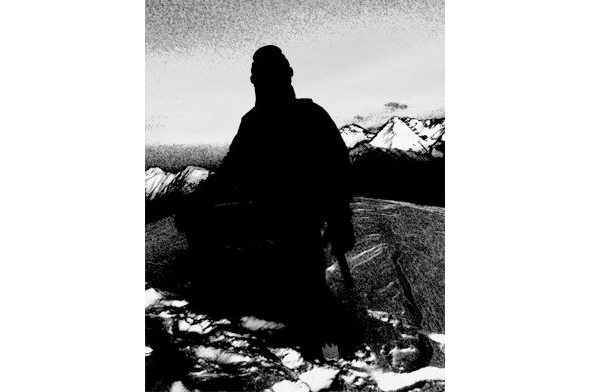
But the friend left him: — I’m going to run to the top and come back to you.
The way to the top was difficult, he lingered and when he came down to his friend, he gave no sign of life. And he howled with grief.
The Mountain Spirit put a curse on him: you will walk alone on the trails and bring people misfortune, and people will turn away from you. Everyone who sees you, misfortune will happen to you, and if he meets your gaze, he will die.
Since then, the Black mountaineer began to avoid people, hiding in wild gorges, but it is difficult to live alone, and he looked at people from a distance. Sometimes people noticed something black in the distance, but when they approached, they saw only traces of mountain boots.
And he began to walk alone on the trails, blackened by the sun, lost weight, overgrown, and was terrible. And there was no rest for him.
Since then, in the mountains began to happen trouble: the food is lost, then at night you can hear footsteps in the bivouac, sometimes mumbling, inaudible conversation, sometimes wild distant shouting.
And the mountain spirit has put another curse: when you fail, you will not be killed, but another climber will fail and die instead of you.
Legends and rumors about the Black Mountaineer have been wandering in the Caucasus for a long time, someone saw him, someone heard his footsteps in the silence of the night, his murmurs.
There was a silence, coldness reeked from the mountain.
— Have you ever met the Black Mountaineer?
The instructor thought for a moment and continued the story:
— Once we were doing the Bizengii Wall and pitched our tent on the platform below the main summit.
It was a quiet night and suddenly we woke up to the sound of footsteps near the tent. Then we heard heavy breathing, some mumbling, then fussing near the primus, and retreating footsteps. Horror gripped us, and we lay still. When the sounds died down, I looked out of the tent — no one was there, only the mountain peaks were dimly visible in the moonlight.
There was a sense of unease all around us. The next morning we discovered our food was missing and we noticed extraneous mountain boot prints that led in a direction we hadn’t gone. We quickly climbed to the top and began our descent. We had trouble on the way down: rocks would fly overhead, one of us would fall, and I hurt my arm in the fall. I never went to the Bisengiya Wall again.
Everybody felt uncomfortable and we sat in silence for a long time.
I knew a climber who once told me that when they had hiked to Erzog Peak, just before they reached the summit slab, someone pushed his arm and he nearly fell down. They immediately went down as a matter of course.
Other strange things are also noted: now stones suddenly fall from above, then eagles circle in one place with alarming peck, then mountain goats rush frightenedly through the gorge. I have not personally met the Black Mountaineer, but who knows, anything can happen in the mountains.
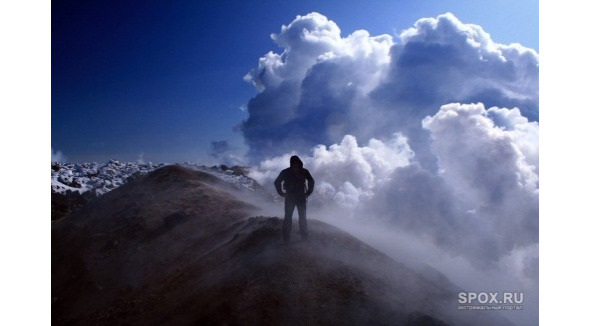
Hunters at rest
(From the series Hunting Stories)
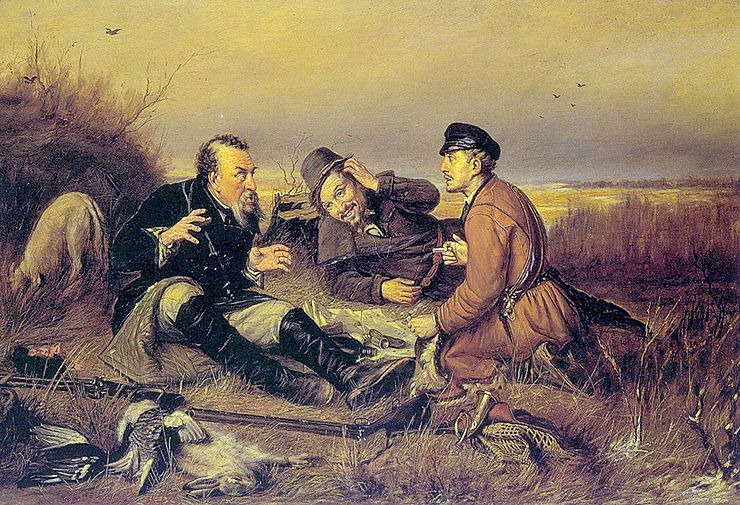
Narrator — Trezor and I once went hunting to shoot hares. We went into such thickets, but the hares had all gone somewhere. And so we went out to the clearing, came to a birch tree, which grew in the middle of the clearing and just sat down to rest, when suddenly at the edge of the clearing a bear appeared.
Young: — Is it real?
Narrator: — Of course, a big one. He saw us, thought for a while, got up on his hind legs and came at us. I didn’t get confused, grabbed my gun and started aiming. Out of the corner of my eye I see Trezor climbing up a birch tree in fright. I waited until the bear had come within 30 yards and pulled the trigger, but the shot did not come — it misfired. The bear was getting close. I dropped the gun and climbed up the tree behind Trezor.
Young: — Well…
Narrator: — I am climbing a tree, Trezor is ahead of me, and a bear is walking under the tree. We climbed to the top, Trezor sat on my shoulders, and the bear walks underneath. He walked and walked, then he took the gun and started twirling it in his paws.
And maybe he will shoot, I thought with fright. The bear raised his gun, took aim at us, and bang-bang. I flew down from the tree, Trezor flew after me, and we fell on the bear. The dog howled with fear, and the bear, distraught at the noise, threw his gun and ran away, tail between his legs in fright.
Young: — Phew!
The old man: — Wait a minute, wait a minute, the bear has no tail.
Narrator: — Well, why are you picking on me? He tucked up his something and ran away.
That’s how it happens!

Valery Balezin’s first route of the 6th category of complexity
After the championship veteran climbers in Sudak, Valery Balezin, Raikhan Galiakbarov and I went to visit Nikolai Zakharov, who rented a cozy house in Novy Svet. Hospitable host laid the table, which was with pleasure, after which in the usually modest and reticent Valery Balezin awoke talent storyteller and he told about his ascent to his first summit of difficulty 6. My imagination played out, and I retell his story in the first person.
— One day we went on our first six on the Bezzubkin route.
Azariev: — Wait, wait, isn’t that on the peak of Free Korea?
— Yes, this route is on the peak of Free Korea. This was the third pass of the route.
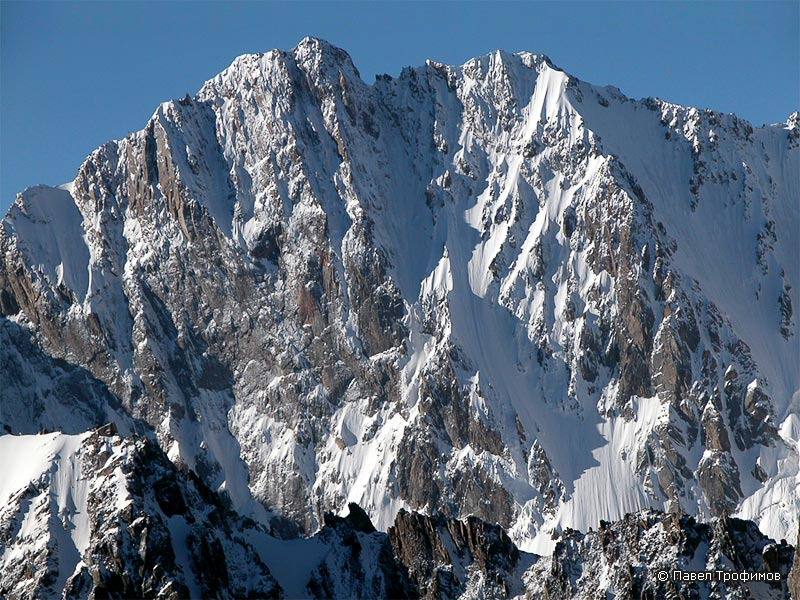
Azaryev: — When Bezzubkin passed it at the championship of the USSR, me and Kustovsky’s team just there closed the first categories in mountaineering. Bezzubkin passed the route in eight days. Today this Korea is traversed up and down, but then it was the first route of the 6th category of complexity.
Balezin: — In 1981 we (sport club «Yenisei» under the leadership of Y. Sapozhnikov) were in the mountaineering camp Ala-Archa. At that time 6A and 6B were not divided into 6 difficulty categories.
This season we planned to do level 6 climbing. Our choice fell on Bezzubkin’s route in the middle of the northern part, 4777m, which had been climbed for the first time in 1969 by the team from Krasnoyarsk for 8 days. For this ascent the team, led by Bezzubkin, won gold medals at the championship of the USSR. Since then the route had been repeated only once, so we planned a third ascent along this route.
The route consisted of three parts: the first part — the ice steepness of about 60 degrees and a length of about 250—300 meters, then the rocky part, a steep wall, destroyed in places and icy, about 350 meters and finally «roof» — a rocky slope covered with ice and snow steepness of about 60 degrees and a length of about 250 meters.
Our team consisted of 4 people: Bogachev A. (nickname Nikodim), — team captain Sapozhnikov Yu. (nickname Sapog). Balezin V. and Egunov V. (nickname Joe). All of us were climbing the route of the sixth category of difficulty for the first time.
Having carefully studied the route visually and from the description we had planned to climb it with only one overnight stay at the beginning of the roof, fortunately there was a snow shelf there.
After an overnight stay in a hut on the Corona Glacier, we set out on the route early in the morning at 3:00. The lower ice part of the trail had to be walked before sunrise, as it was then quite heavily pierced with rocks flying from the «roof». The weather was warm, and there were even trickles of water running on the ice, although it usually freezes at this time. This was not good, as warm weather increases the danger of the trail and the likelihood of bad weather is high.
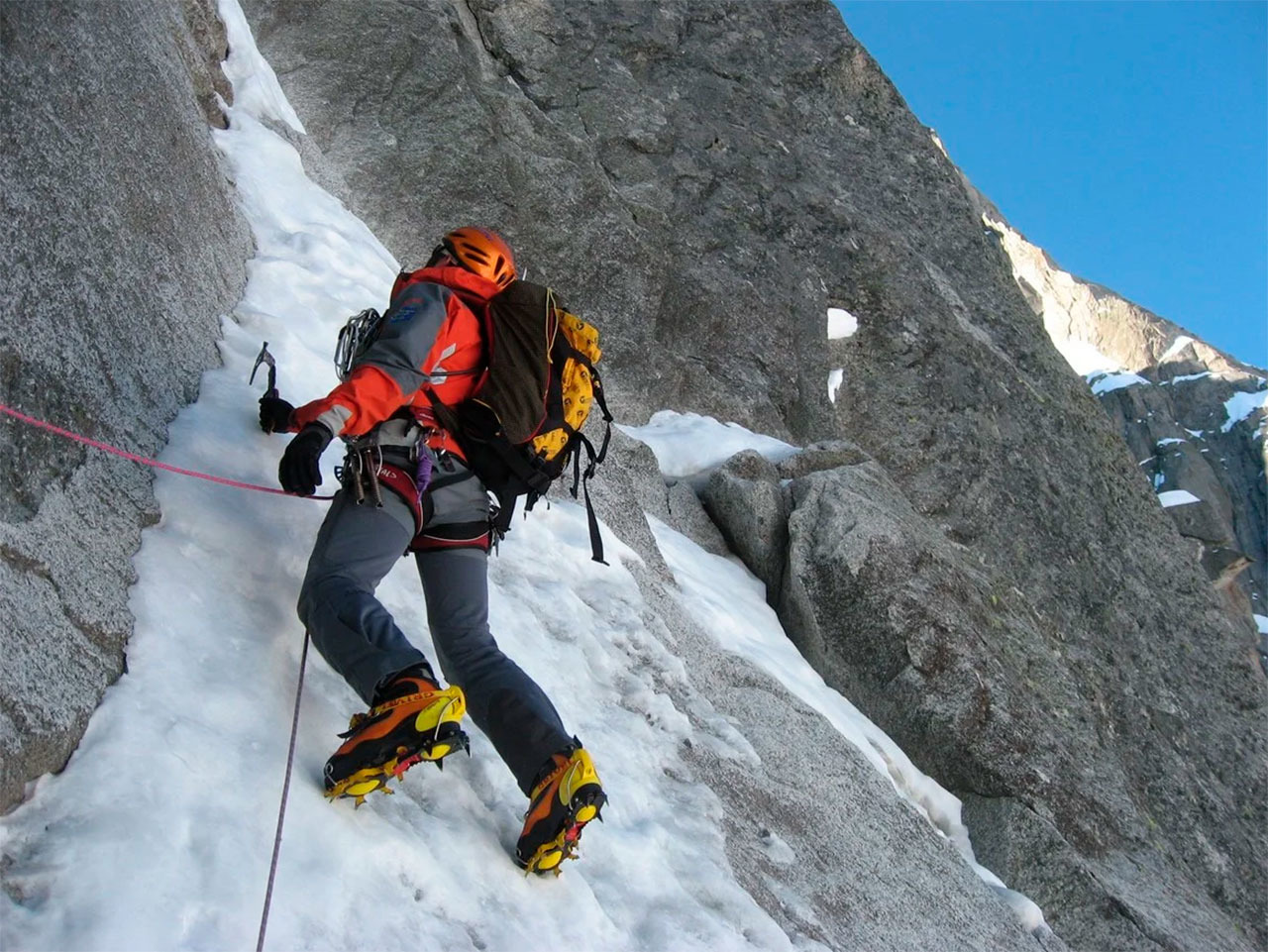
We quickly made our way through the ice part of the trail and by 6 o’clock we arrived at the rock wall. At the beginning of the ice part of the trail Nicodemus was in the lead, and at the end of the ice part before the main rock massif, according to the tactical plan, I was in the lead.
While traversing the route we tried to minimize the weight of our backpacks. I didn’t even take my climbing shoes, but put on my rock shoes. They were some of the first rock shoes to appear in the USSR. Shura Gubanov brought them back from England and then gave them to me. These shoes were something in between modern mountaineering boots and lightweight trekking boots. They were not as comfortable for climbing as special rock shoes, but I could use them for approaches, and I even managed to securely attach ice crampons to them and walk quite confidently in them on the ice.
The start of the wall turned out to be ruined and not very convenient for setting up a belaying station. Nevertheless, I climbed the rocky ledge rather quickly, trying not to drop rocks on my comrades, after which the relief became firmer. The route was logical, and we gained altitude fairly quickly, the weather was good. I went first, Nicodim second, Joe third, and Sapozhnikov last.
In the middle of the route there was a horizontal traverse to the left about 15 meters on a steep wall, I passed it quickly, took Nikodim with me and climbed another 1.5 rope (60 m), then our movement stopped. Nikodim was below me on the shelf, waiting for the ascent from below, and Joe and Sapozhnikov are stuck on the traverse. I sit at the top and listen to their conversations, Nikodim shouts «let’s get the rope faster,» to which Sapozhnikov guiltily replies: «wait, wait, we have a problem.»
After an hour of waiting, Nicodim got fed up and started scolding Sapozhnikov — Sapog, how long can you wait,» to which Sapog and Joe responded vaguely. Finally, after 1.5 hours, they managed to get the rope to Nicodim on the shelf. The rope got stuck in a crevice and they had to cut off a piece of rope.
At this time I was sitting on the shelf looking down into the valley. Dense cloud cover was rising up the gorge, gradually closing the gorge, the foothills, closing the glacier, and gradually approaching us.
Nicodeiu brought a rope, I climbed higher, at that time the cloud cover caught up with us, it immediately became colder, and rain began to drip. As the clouds rose higher, the rain intensified, the rock got wet, and water started dripping down it. But we could not stop, we had to climb out onto some shelf.

I especially remembered the long vertical inside corner with a slit through which the water flowed. I had to stick my hands through the slit, water flowed into my sleeves and out of my pants. In spite of everything, I had a fighting spirit, and I climbed at about the same speed as I had on the dry rock. I heard Sapozhnikov shouting from below — look for a shelf for the night, although it was still a little over one o’clock in the afternoon. I began to remember the description and tried to imagine where the shelves were.
There was a good shelf only at the beginning of the roof and two more ropes about 40 meters before it. I went up the rope by traverse to the right, came out on the shelf and made a station on it. At that time the temperature dropped below zero, the rain turned into snow, the wind picked up, a heavy blizzard started, the wind was sculpting the snow not only on the steep cliffs, but also on the ceilings of the ledges.
Ahead was a steep rock bastion about 35 meters high. I tried to climb further, but after about 15 meters I finally froze and could no longer move up. It was about 20 meters to the roof. Covered with snow from head to toe, I went down to the shelf to Nicodemus, who had already begun to prepare it for the night.
The shelf was small, triangular in shape (rectangular triangle) with one cathetus 1.5 m and the other less than 1 m. Sapog from below shouted: — Did you find the shelf? Nicodim answers: — We found it. Sapog asks: — Shall we lie down on the shelf? Nicodim, without losing his sense of humor, replies that he can hardly lie down, but he can sit down.
Joe came and brought us the tent. We stretched it out on the ridge, nailed it to the rock and crawled into it like a sack. A bucket of water immediately poured over our clothes, a big puddle formed on the floor of the tent, and we had to hit the bottom of the tent with a hook to get the water down. The last person to crawl into the tent was a wet, freezing Sapog, who told us he had never been so cold, even at the harshest Peak of Victory. He took out a flask of cognac (we always took a flask and 150 grams of cognac with us on the route) and tried to pour it into the lid of the flask, but his hands shook. Then he put his hand with the flask on one knee and his hand with the cap on the other knee and poured himself 20 grams that way.
It was hard for us to sit in the tent, and the time was still about three o’clock in the afternoon. The weather got even worse, although we thought it couldn’t get any worse, it was snowing like a wall. The wind was blowing simultaneously from all directions and it was very cold. We fired up a gas stove made at Krasmash plant where other equipment was also made. The tent immediately felt warm, even somehow cozy, despite the dampness and 100% humidity. We boiled tea, ate something to eat and settled in for the night.
Despite such extreme conditions, we can say that the overnight stay was a success.
While the guys are warming up and resting, I will make a small lyrical digression. Imagine the picture: night, the rain turned to snow, the wet rocks are iced over, and four absolutely wet guys are lying on a shelf in the tent. Down — 250m wet and partially iced wall, up — 100m iced wall after rain. And this despite the fact that they are impassable in rain and snow. For usual people it is full physical and psychological disaster. Even the prepared climbers would be in a difficult situation. But not for our four. They’ve been through a tough and sometimes brutal selection.
(When they find themselves in various adversities, weak in spirit and body are eliminated, only the strongest, the most capable, the most persistent and courageous remain. Yes, not everyone can look in the eyes of real dangers, when you can snap and get hurt or die. Besides, Valeri Balezin, one of the strongest mountaineers in the world, was there.
So the four of them were sitting in a tent. They planned to climb the route in one day (Bezzubkin’s team had taken eight days to do so). It was quite realistic: they were students of Krasnoyarsk mountaineering school, one of the strongest in the world.
Let’s see how they got out of this situation. Since we got up at 3 a.m. today, we started to get into bed, or rather, to get stronger, since there was only room to sit. (Editor’s note))
There were no carimats at the time, and we brought mats made of porous foam, but they absorbed water and offered little protection from the cold floor of the tent. I put this mat on my back under my down jacket, which got soaked through because the tent material was on my back, which saved my back from freezing. I also had a mat with foam plates sewn in, which does not absorb water. I put this mat on a cold shelf and put a storm jacket on top, which I sat on. Periodically I slid off the shelf and hung on the safety loop. My friends did the same.
We would stack our feet in a pile, and periodically I would wake up and find my feet at the very bottom. I would pull them out, put them on top, and go back to sleep. An hour later, it would happen again. That’s how we slept. My sleeping bag and down got wet and rolled up into separate clumps, but that’s okay, we didn’t freeze. Despite such extreme conditions we can say that we had a successful night.
I woke up in the morning at seven o’clock, looked out of the tent — leaden sky, wind with snow, cold. What could I do, we had to get out. I got ready and climbed out, while the guys were packing the tent and things in their backpacks.
Azaryev: — And how far to the peak was it?
Balezin: — About five — six ropes.
I struggled to get through the gap, but then the wall slope decreased and the whole surface appeared to be covered by couloirs. Rocks usually fly in the couloirs, but here everything was covered with snow and frozen, so no rocks flew.
We put on our ice claws and walked quickly up the couloir. We came to the summit dome, which was covered in ice. The ice is thin, but when you stick an ice hammer in, it holds. Just like that, carefully, I climbed up the ridge. I grasped the sharp ridge with my hands, pulled myself up, and looked at the other side. There was fog and snow; I couldn’t see anything. As we climbed, it was as if we had dried off a bit, warming up as we went.
We reached the top of the peak, but there was nothing in sight. I had not read about the descent, but Sapog assured me that he had been there and knew the descent well. Indeed, the dome is quite gentle, with drops and walls underneath. I remembered that a group had gone to the summit before us and there should be traces of the descent, but everything was packed, where to look for them. We began to shovel the snow, found traces in one place and went that way. We approached the edge of the dome, dug around and found a loop from a rope attached to a rock ledge, so we were walking correctly.
We went down and followed the ridge. Sapog said that it would take about twenty minutes to walk along the ridge and there would be a couloir to Karagai Gorge. We went along the ridge, saw the beginning of the couloir, I went down by the safety rope and saw the rocky precipice. Wrong couloir. We went further, again a couloir and again rocky drops. Only in the third couloir I did not see any drops, and we began our descent. We descended, the snow turned into rain, and we were soaked again. But it was even worse on the wall. We went down and there were rocks covered with snow. If you step on a rock and slip between the stones, you can fall through the waist. Well, we walked about a kilometer, vegetation began, even bushes appeared, but the fog and rain continued.
Zakharov: — And ram.
— No, there are no rams, there are only goat paths and we go down by them. The canyon gets narrower and there is a steep wall in front of us. What to do, I climbed up, we got over, but there was a wall again. It was getting dark quickly, and our lanterns were all out of date, they were old, with incandescent bulbs. Only one was shining a little bit. It was burning for ten seconds and then it went out, when you turn it on, it would shine again for ten seconds. We approached — a steep grassy slope, 80 degrees, as it seemed to me. I put on crampons and climbed with an ice-axe. I climbed up — there I tied a rope around a tree. The others with the help of jumars climbed up. Then the descent to the round glade, on the edge of which a deep brook flowed noiselessly. Well, I ran into it up to my chest. My boot was up to his neck, too, by inertia. Shouting, swearing, we managed to warn the others.
We crossed a clearing, and Sapog says, that it is necessary to spend the night, Yes you what, here near all, no, speaks, here should be the wood. We stopped, put the tent, and the guys went to get firewood. And there, on a slope there was a dry juniper. We dragged it and somehow broke it with our hands, but we needed to light it and it was still drizzling. We put wet firewood around the gas burner and set it on fire. We were sitting and waiting, at last the wood flared up, we quickly put it away, and meanwhile the juniper was burning well, and it gave a strong heat, one could not come close to the fire.
Sapog put a tent not far from the fire and went to sleep, and the others still long sat by the fire. Two hours later I decided to go to sleep too, I looked into the tent and saw that it was warm, even hot from the fire, but it was damp, there was a puddle of warm water on the floor and Sapog lay tired and slept in it. I snuggled up next to him on an almost dry spot and fell asleep too, while Nicodemus and Joe stayed by the fire until morning.
In the morning we realized that Sapog was right to insist on sleeping overnight, because we had to cross the Ala Archa River over the bridge, which was slightly upstream, we would not see in the dark and for sure we would get lost. In the morning we safely found the way and in an hour and a half we were in the Ala Archa alpine camp.
Strangely enough, despite such extreme climbing conditions, no one caught a cold or got sick, the only thing I had is a slight loss of sensitivity and redness on my toes, a consequence of climbing in rock shoes with crampons attache- No, there are no rams, only goat trails, and we descend them. The canyon becomes narrower, and there is a steep wall in front of us. What to do, I climbed up, we climbed over, but there was a wall again. It was getting dark fast, and our lanterns were all out, they were old, incandescent. Only one shone a little bit. It burned for ten seconds and then went out; if we turned it on, it would shine again for ten seconds. We walked up — a steep grassy slope, about 80 degrees I thought. I climbed up with an ice axe. I climbed up — there I tied a rope around a tree. The others, with the help of jumars, climbed up. Then I descended to a round glade with a deep creek running silently along the edge. I could not see it and fell into the creek up to my chest. Sapog, who was following me, also fell up to his neck. Shouting and swearing, we managed to warn the others.
We crossed the clearing, and Sapog said that we had to spend the night, but there was a bridge across the river. No, he says, there must be the wood here. We have stopped, have put the tent here, and lads have gone behind the fire wood. And there, on the slope there was a dry juniper tree. We dragged it, somehow broke it with our hands, but we needed to light it, and the rain was still drizzling. We put the wet wood around the gas burner and lit it. We sat and waited, at last the wood burst into flames, we quickly put them away with the gas burner, and the juniper, meanwhile, was burning well, and a strong heat was coming from it, we could not get close to the fire.
Sapog pitched his tent not far from the fire and went to sleep, while the others sat around the fire for a long time. Two hours later I decided to go to sleep too, looked into the tent and saw that it was warm, even hot from the fire, but damp, there was a puddle of melted water on the floor, Sapog lay tired and slept in it. I crouched next to him on an almost dry spot and fell asleep too, while Nicodemus and Joe stayed by the fire until morning.
In the morning we realized that Sapog was right to insist on spending the night, because we had to cross the Ala Archa River over the bridge, which was slightly upstream, we would not see in the dark and would surely get lost. In the morning we found our way safely and in an hour and a half we were at the Ala Archa mountain camp.
Strange as it may seem, despite such extreme climbing conditions no one caught a cold or got sick, the only thing I had was a slight loss of feeling and redness on my toes, a consequence of climbing in rock shoes with crampons attached to them, but after ten days it completely passed.
This is the effect of extreme conditions. During the war our soldiers were freezing in the trenches in their overcoats, but they rarely caught cold (editor’s note).d to them, but after ten days it completely passed.
(This is the effect of extreme conditions. During the war our soldiers were freezing in the trenches in their overcoats, but they rarely caught cold (Editor’s note).)
Krasnoyarsk mountaineering veterans at the party
This happens in the mountains.
It doesn’t happen anywhere.
Climbing wisdom
After the next International Championship among veterans in mountaineering and climbing, which, as always, is held by Yuri Mashkov in Sudak in 2019, we gathered at Nikolai Zakharov’s cottage in Novy Svet, Crimea to rest and relax after the intense competition.
Let me introduce our interlocutors.
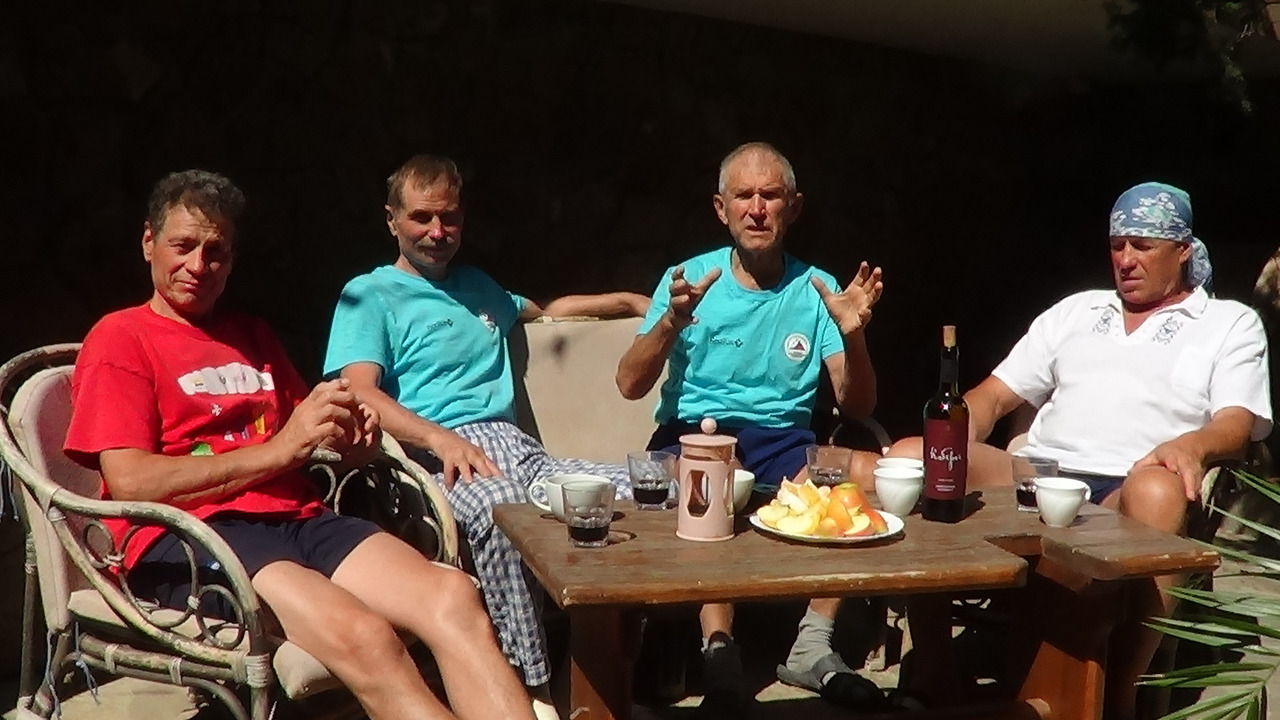
To my left sits our gracious host, Nikolai Zakharov, a famous mountaineer and climber. He is a Master of Sports in mountaineering, International Master of Sports in mountaineering, multiple USSR champion in mountaineering. He was everywhere: in the Sayan Mountains, Altai, Tien Shan, Pamir, Phan, the Caucasus, Everest, on all the continents, and even in Antarctica there is his first ascent of the wall of difficulty category 6A.
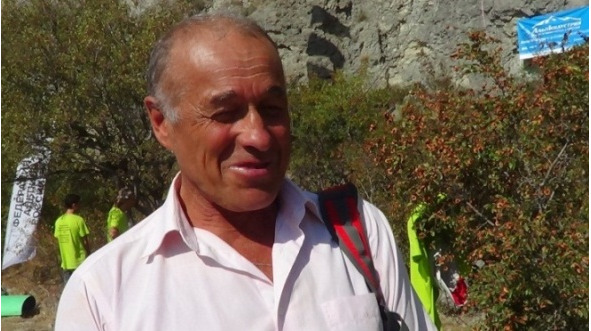
Listen, Nikolai, have you been to the Moon, are there mountains there too?
— I have not been to the moon yet.
— And you would like to visit?
— You ask, it’s my dream, there I would weigh only 13 kg, and my backpack is less than 3 kg. Not to climb, but to enjoy. Maybe this dream of mine will come true someday.
To my right sits Valery Balezin. He is the only world-class Master of Sports in mountaineering and rock climbing, he has participated in and won all major competitions in mountaineering and rock climbing.
— Listen, Valera, have you ever taken part in «Sports Lotto»?
— No, I did not.
— It’s not the USSR championship, you need luck there.
And to my right sits Raikhan Galiakbarov — master of sports in rock climbing, multiple champion of the USSR and Russia. He plays the role of a novice in our company, trying to extract stories about their adventures from the veterans.
.
Valery Balezin, Igor Azaryev, Raihan Galiakbarov
And to the right of Zakharov sits Igor Azaryev. He is a candidate master of sports in mountaineering and climbing, a multiple champion of Ukraine.
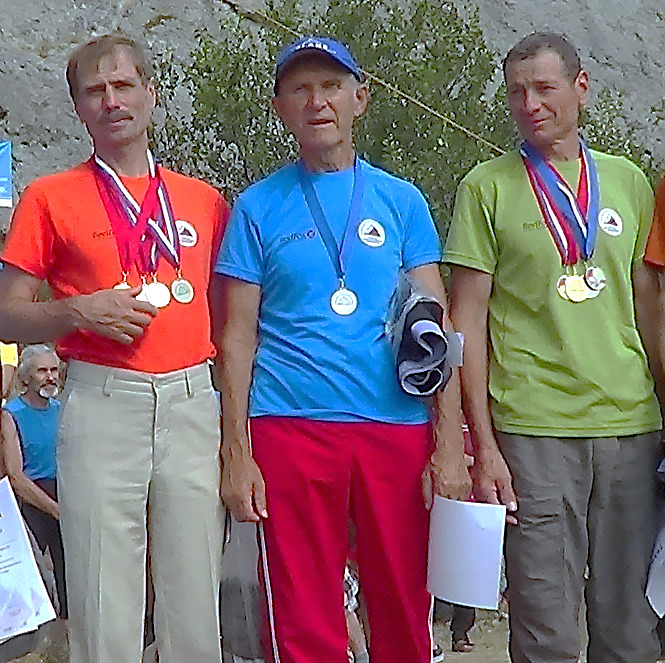
Since we are on vacation, we allow ourselves to relax with a bottle of genuine Crimean wine.
Since I consumed the drink with everyone else, some details and gaps in my memory are forgotten, so please excuse me somehow.
Raikhan: — You are such experienced and knowledgeable climbers, tell us about your adventures in the mountains.
Azaryev: — Nothing special happened to us, we went to the routes, it rained and other troubles, but nothing special. Except, there was one case — once I flew in the mountains on an eagle.
Raikhan: — A real eagle?
— Well, what else could it be, a real big eagle.
— Wow, that’s interesting, tell me about it.
Flying the Eagle
So, there was such a case: we went to the Yagnob wall on the route of the 6th category of complexity.
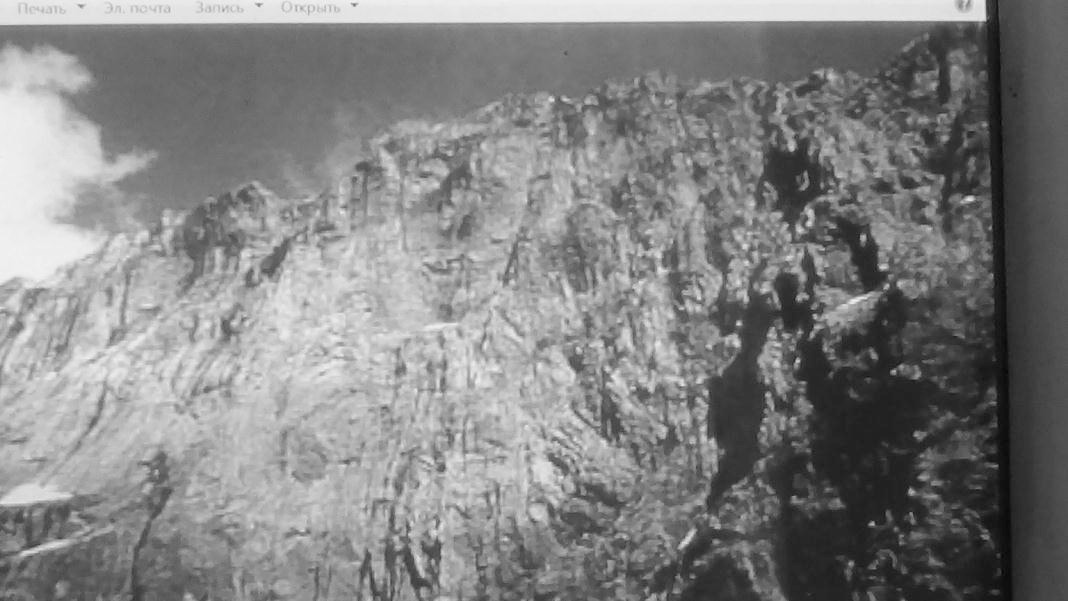
Zakharov: — But without any lies.
— And why, you may ask, I took this magic drink on my chest, so only the truth.
— Well, come on, tell me.
— So we came to the wall of Yagnob.
Raikhan: — And where is this wall?
— In the Fann Mountains in the Pamirs.
— And there are all kinds of dushmans and terrorists there.
Zakharov: — But at that time it was safe everywhere in Pamir. And what route did you take, the Efimov one?
— Yes, were you there?
— We were there in 1982, and when were you there?
— Two years earlier.
Our team was rather weak, the route was purely rocky, and among the climbers I was the only one at first, the rest were from the category of stompers, but the group had been going together for a long time and worked well with the rope. Then the team was strengthened by Alexander Verba, a strong climber, and weakened by the head of the field camp rescue team. The last time he went on a route of the third category was about three years ago. And he wanted to climb the sixth and that was it.
Well, the route we went without problems, and before the top of the mountain this happened. There before the top was a smooth wall of about 40m. The wall is smooth, almost without hooks, but with a slight slope, so it was possible to pass on it in special rock sneakers. I climbed it, and Verba insured me.
— Wait a minute, wait a minute, I passed it too, but it did not end very well for me…
— What happened there?
— Well, I’ll tell you later.
— So, after twenty meters, I found a suitable crack, hammered in a hook, snapped a climber’s carabiner into it and let the rope through. My heart was relieved, at least I had some security, and I climbed further. The rope was just enough to reach the shelf I saw at the end of the wall.
I reached the shelf, put my hands on the shelf, and pulled myself up. And then I saw the picture: there was an eagle standing in the nest, feeding its chicks with meat.
— Could it be,“ the young man exclaimed, „a real eagle?
— Of course he didn’t expect to see me, and then he jumped up to me, intending to smash my head with his beak. I felt that I was about to fall, so I instinctively grabbed the eagle’s paws with both hands and flew down, picking up speed.
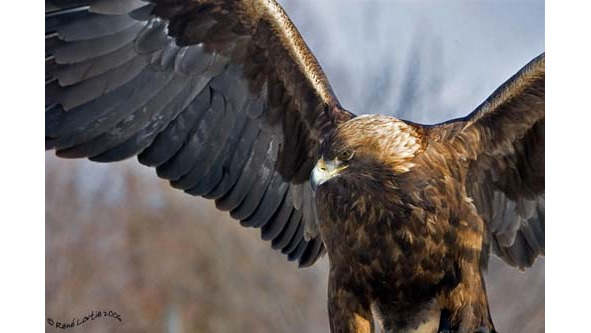
And then the eagle spread its mighty wings, and the speed of the fall began to slow down. I saw that I was flying past the hook I had hammered in, and I flew on. Then the rope tightened on the hook, and I swung over to the shelf, where Verba was watching me. Once I was down on the shelf, I let go of the eagle’s paws and grabbed Verba, then grabbed the safety carabiner and hooked the safety loop.
— Wow, that’s a real eagle!
Then Verba turned to me, «How did you get here?
When stones fell from the wall, he pressed his face to the rock and could not see anything.
Valeriy Kuzmuk climbed using jumars (rope climbing devices) from below and saw everything. But an eagle was flying above us with a threatening cry.
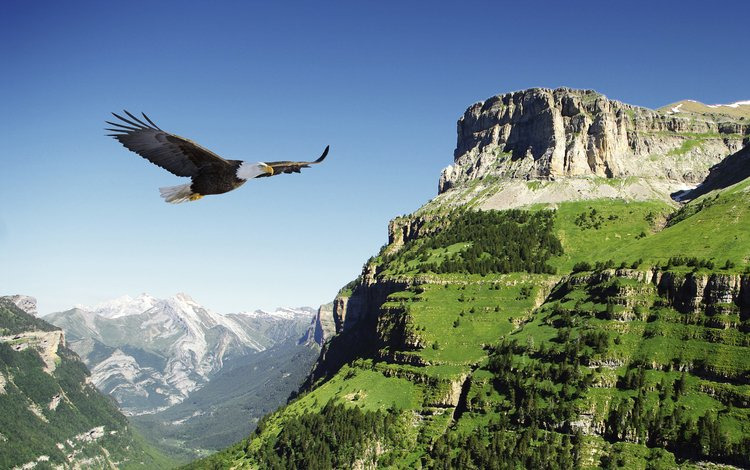
We conferred and climbed to the right along the narrow shelf.
Raikhan : — And you left the hook and the carabiner?
— Of course, to tease the eagle again. Then we went to the right, the eagle calmed down and sat in the nest. Further on the ascent passed normally. Here such was the case.
And as a memento I brought home a feather from an eagle wing which I accidentally pulled out of it.
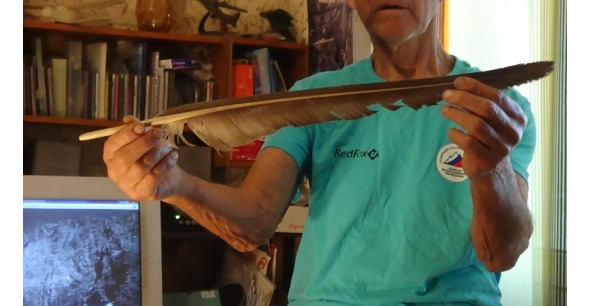
Zakharov: — And with this eagle I had a story, but let’s drink to a happy rescue, because mine did not end so well.
Let’s drink to a miraculous rescue.
Бесплатный фрагмент закончился.
Купите книгу, чтобы продолжить чтение.
